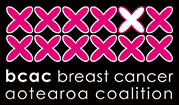The debate over breast screening has been re-ignited with the publication of a new study which suggests that screening has not yet reduced the number of deaths from the breast cancer in the UK.
This is in direct contrast to another UK study published in the Lancet last year, which showed that patients invited for mammogram screening had a 20 per cent lower relative risk of breast cancer death than those who were not invited. It also contradicts recent US and Danish studies which report significant survival benefits from breast screening programmes.
Breast Cancer Aotearoa Coalition chair, Libby Burgess, says breast screening has always prompted debate, but she hopes New Zealand women continue to recognise the value of screening for themselves.
“We know that breast screening helps to identify breast cancer early and that means that women get treatment early and therefore increase their chances of survival. If breast cancer is discovered late, when it has spread to other parts of the body, then it can’t be cured.
“Even the author of this latest study acknowledges that breast screening has value for individual women and that’s what we want New Zealand women to understand. Getting a mammogram could save your life.”
The latest study, which is published in the Journal of the Royal Society of Medicine, analyses mortality statistics recorded before and after 1988, the year that the National Health Service Breast Screening Programme began in the UK.
The results show that there has been no greater fall in deaths among women who underwent breast screening compared with those that didn’t.
Figures from the New Zealand Ministry of Health show that breast cancer mortality per 100,000 women dropped from 25.2 in 1999 to 19.9 in 2009. The publicly funded screening programme was introduced in New Zealand in 1998.
The British charity, Breakthrough Breast Cancer, questions the latest study out of the UK because it did not compare mortality rates for women who chose to attend screening with those that did not, making the benefit of screening on mortality difficult to determine.
Libby agrees that this is a significant flaw in the research. She also notes the study makes much of a rather dubious comparison of survival improvements for young women vs older women who were screened.
She says breast cancer mortality has declined in the past twenty years due to a number of factors, including greater awareness, better diagnosis, new and improved treatments and earlier detection of breast cancer through breast screening.
“I think it’s also important to remember that women who have breast cancer identified by screening are more likely to have their breast cancer identified early and this may mean they don’t need to undergo as intensive or arduous a treatment programme as other women. They may only need a lumpectomy rather than a mastectomy and may be able to avoid chemotherapy”.
Libby says while mammographic screening is not perfect it’s an important tool which should be used. She says new screening methods are being developed, including the "P-test" which detects levels of certain proteins that will reveal the presence, type and stage of breast and other cancers in the urine.
Right now, the best tools women have to detect breast cancer early are mammograms and being ‘breast aware’ or knowing how your breasts ordinarily look and feel and acting immediately when you notice any changes.





